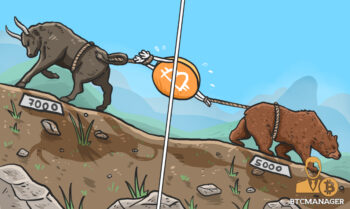2018-9-23 21:03 |
The industry is inundated with exhausted project parties, anxious users, and depressed media influencers. However, the developers, who are the cornerstone of the industry, remain devoted to technical R&D and are no longer as elusive as they once were. People are starting to pay more attention to development teams as they are the most important project assets for weathering this latest storm.
Technical Breakthroughs Continue Despite Market TrendsIn spite of the market conditions, project teams continue to make technical breakthroughs. Although there are various ways to achieve a breakthrough, advancements in the development of the underlying public chain remain the most difficult.
Not long ago, people in the industry often simplified the problems faced in public chain technical R&D. Regardless of whether this interpretation was justified, it now clear that these problems are very complex.
First, there is the consensus mechanism. Distributed accounting is a fundamental aspect of the blockchain. Each person (node) participating in the accounting has a complete record book or ledger which records every transaction on the chain.
However, records cannot be created at random, so how does one decide that a transaction is authentic and notify all the other record keepers? The rules in place that solve this dilemma make up the consensus mechanism, which is also the basis of the blockchain. The properties of consensus also determine the level of security, required computing power, and transaction throughput of the network.
While there are many types of consensus mechanisms, PoW and PoS are the most widely used. PoW is an abbreviation for “Proof of Work”. As indicated by its name, this consensus mechanism requires the completion of complex mathematical calculations. Whoever provides the correct answer first gets the right to add the new block of validated transactions to the blockchain. The PoW mechanism is used by Bitcoin and many other cryptocurrencies.
However, it requires a vast amount of electrical energy to perform the calculations required to reach consensus. These calculations have no practical significance and produce no actual value, and only those who have obtained the correct answer are rewarded. According to industry data, the annual electricity consumption of Bitcoin mining is expected to be about 48.37 TW/h, surpassing that of Iraq which ranks 54th in the world in terms of consumption.
Due to its high computing power requirements, PoW was once considered the most secure consensus mechanism. However, it turns out that is not the case. PoW may be secure given the current scale of Bitcoin, but for cryptocurrencies that do not reach such a scale, hackers can easily produce the 51% computing power required to compromise the network using cloud hosts.
PoS is an abbreviation for “Proof of Stake”. PoS selects the bookkeeper in a different way from PoW which greatly reduces the amount of wasted energy. The basic rule is that the more tokens you hold, the greater probability you have of obtaining bookkeeping rights.
There are many different variations of the simplified explanation mentioned here. These variations determine the security of the blockchain and the processing speed of transactions, which is often specified in TPS or transactions per second.
Why is TPS so important? Because in addition to transfers, every record of information on the blockchain and every call to a smart contract is a transaction. TPS represents how many applications a blockchain can effectively support and how quickly it can process information. Unfortunately, there is a tradeoff between security and performance which presents a big challenge for public chain developers.
Passionate Arguments Ensue Between DevelopersIn addition to the balance between security and performance, developers also struggle with the secure, decentralized storage of DApp data. How do we establish a data channel between the blockchain and the real world? How do we design a sustainable token model? How is the blockchain managed? These are the challenges that blockchain developers must overcome.
Undoubtedly, some will be afraid and move on to less challenging opportunities, but many bright minds will remain.
XMAX is a popular and well respected project so until recently, the technical R&D team was naturally ignored. However, the developers are not concerned because for them, they find their sense of presence in an ocean of code versus public recognition. But now that winter has found the markets, are the developers still around? This is a question many are asking during the recent market downturn.
The answer is a resounding “yes”; the team is not only still around but is also expanding. XMAX is a pan-entertainment blockchain project, and like many other public chains, they face insurmountable technical barriers. The R&D team is working to find new solutions to balance the core constraints of security, performance, and cost.
Finding New Paths through Side ChainsSince public chain resources are typically expensive, the expansion of new features will be subject to many restrictions. Therefore, the XMAX technical team looks to find new paths to solutions and are currently solving issues through the use of side chains.
According to the head of the XMAX technical team, the interaction between the side and main chain is challenging due to the closed nature of the blockchain. For example, the main chain cannot actively access the outside world. Thus, supervising the reliability of the side chain is an industry-wide problem.
The XMAX team believes that the Lightning Network is a relatively successful solution to Bitcoin scaling problems, and the Plasma solution for Ethereum is likewise a suitable choice. But since Vitalik Buterin and Joseph Poon only released the initial draft of the Plasma project on August 10, 2017, this solution has not yet been implemented.
Due to the infancy of blockchain technology, it is difficult for XMAX to draw on lessons learned from previous projects. But fortunately, the team is optimistic about side chain interactions and will propose their own set of solutions based on this idea. It so happens that the side chain solution also leads to the steady advancement of other R&D activities.
Parallel Double Chains Ensure Data ConsistencyWith Plasma, the head of the XMAX technical team noted that the supervision of the side chain must be completed by an Ethereum smart contract, and the side chain needs to periodically upload verification data to the relevant Ethereum contract. However, due to the high operation cost of the Ethereum contract, XMAX cannot upload all data in the side chain to the contract.
Thus, in order to eliminate redundancy and streamline verification, they designed a parallel double-chain solution for the sidechain.
Simply speaking, a parallel double-chain is a side chain that maintains a chain for itself to ensure the consistency of the side chain data. The data that needs to be verified in the Ethereum contract is then packaged into blocks and concatenated with the second verification chain, which is dedicated to uploading data to the Ethereum contract.
However, since it is unrealistic to verify transactions based on the Ethereum account system, XMAX introduced the UTXO-based sidechain interaction concept. This concept accounts for the need to supervise the flow of sidechain funds in Ethereum, and will pack all sidechain coin transaction data into the verification chain for recording and storage.
A Unique Way for Programmers to Engage in Ecosystem ConstructionPublic chain developers must not only consider the public chain technology itself, but also the ecological architecture of the entire public chain system. The wallet app, smart contract virtual machine, and SDK are all the foundations for building an ecosystem on the blockchain.
Therefore, XMAX chose to develop their own wallet (a tool for trading digital assets), side-chain V8 virtual machine (used to execute the underlying smart contract), and wallet SDK (a development toolkit for the H5 web wallet). The XToken wallet is already in testing and supports transactions in ETH, XMX, and other ERC20 currencies, and allows users to get price data in real time.
In addition, XToken uses a variety of security protection technologies such as private key encryption protection, mnemonic phrases, and keystore storage.
In the future, XMAX will continue to develop and explore related technologies for wallet expansion through new platforms and plug-ins.
With consideration to convenience, the team will continue to develop the H5 web wallet and the supporting SDK. Moreover, the V8 virtual machine, as the scripting engine for smart contracts, will allow the use of JavaScript to develop smart contracts in the future. Developers can implement support for contracted Gas billing by parsing the syntax tree and bytecode.
The XMAX team is also working to streamline the redundant interfaces and structures of the V8 core to provide users with a simple and efficient smart contract system.
Although the winter is cold, technical developers are still enthusiastic about blockchain. It is difficult to achieve technical breakthroughs in this industry but the team is willing to face the challenges; the perseverance of blockchain developers is sure to keep us warm.
The post What are the Elusive Technical Developers Doing During the Recent Blockchain Market Downturn? appeared first on CoinSpeaker.
origin »High Performance Blockchain (HPB) на Currencies.ru
|
|






























